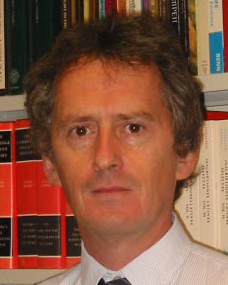Denis Feeney : Sather Professor for Spring 2005
Giger Professor of Latin
Princeton University
CHARTS OF ROMAN TIME
The Uses of Time in the Formation of Roman Culture
February 4
Synchronising the Times of Greece and Rome
2050 Valley Life Science Building
February 11
Synchronising the Times of West and East
2040 Valley Life Science Building
February 18
Transitions from Myth into History I: The Foundation of the City
2040 Valley Life Science Building
February 25
Transitions from Myth into History II: Ages of Gold and Iron
2040 Valley Life Science Building
March 3
Eras and Anniversaries
2040 Valley Life Science Building
March 10
The Grid of the Calendar
2040 Valley Life Science Building
All lectures begin at 8:10 pm. The public is invited.
More about Denis Feeney and his Sather Lectures
Denis Feeney, Giger Professor of Latin at Princeton University, will continue a long and distinguished tradition when he serves as Visiting Sather Professor of Classical Literature in the Department of Classics during the Spring Semester of 2004. The highlight of his visit will be a series of six Sather Classical Lectures (weekly from February 4) on the topic "Charts of Roman Time: The Uses of Time in the Formation of Roman Culture."
Professor Feeney was educated at the University of Auckland (B.A. and M.A.) and Oxford University (D. Phil., 1982). He held positions in Oxford University, the University of Edinburgh, and the University of Wisconsin, Madison, before taking up his current post at Princeton in 2000. He is a renowned authority in the field of Roman literature and cultural studies, one of a group of scholars who have revitalized the field. In addition to many articles and reviews, he is author of The Gods in Epic: Poets and Critics of the Classical Tradition (Oxford U.P., 1991), a sophisticated re-evaluation of the significance(s) of the "divine apparatus" in Greek and Latin epic poetry, and of the short and powerfully provocative Literature and Religion at Rome: Cultures, Contexts, and Beliefs (Cambridge U.P. 1998).
The topics of the lecture series emerged from Professor Feeney's interest in the curious calendar poem Fasti by the great Roman poet Ovid, who is more famous for his virtuoso mythological compendium, Metamorphoses, and his playful love poetry. "Rather to my surprise, " he explains, "as my interest in Ovid's time schemes grew, I found myself more and more drawn into the apparently offputting world of ancient chronography. Without a universally accepted dating scheme, the societies of the ancient world had to chart past time by a complex system of correlation, lining up significant events in the distinct time-columns of different cities, each of whom had their own calendars, dating systems, and eras. The historians of Greece had perfected a panhellenic framework of cross-reference by the time the Romans came onto the stage of Mediterranean history. I became increasingly interested in how the Romans charted their own past onto these panhellenic grids of time. This was a technical challenge of a high order for them, and it was a test case of the crisis of Roman hellenisation, as they made sense of the contours of their past through media that had been devised for Greek cities and empires."
The first two lectures will investigate what is at stake in these synchronistic patternings: how did the Romans map themselves onto a Mediterranean past that had been surveyed by Greek historiography, and which distinctive patterns of Greek time did they adapt for their own purposes as their empire grew until it had physically embraced and subsumed all of the focal points for Greek chronology? The third lecture will treat one of the most important of the ancient world's time-divisions, that between the time of myth and history, using as its test case the foundation of the city of Rome, an event which is surprisingly mobile, and which becomes a focus of obsessive interest in the historiographical tradition. The fourth lecture will examine both the division between the times of the Gold and Iron Ages, the point at which, for the Romans, organised time comes into being along with the other appurtenances of civilisation, and the related long-standing fascination of the Romans with the possibility of a return to the lost Age of Gold. The final two lectures will turn to the Romans' own distinctive indigenous time-grids, the schemes of organisation seen in the consular lists and the Roman calendar. These installments will show how the Romans manipulated anniversaries as they made connections with significant days in the past, and reveal the impact of the reformed Julian calendar on their apprehension of the mesh between the time of the imperial city and the time of the natural world.


